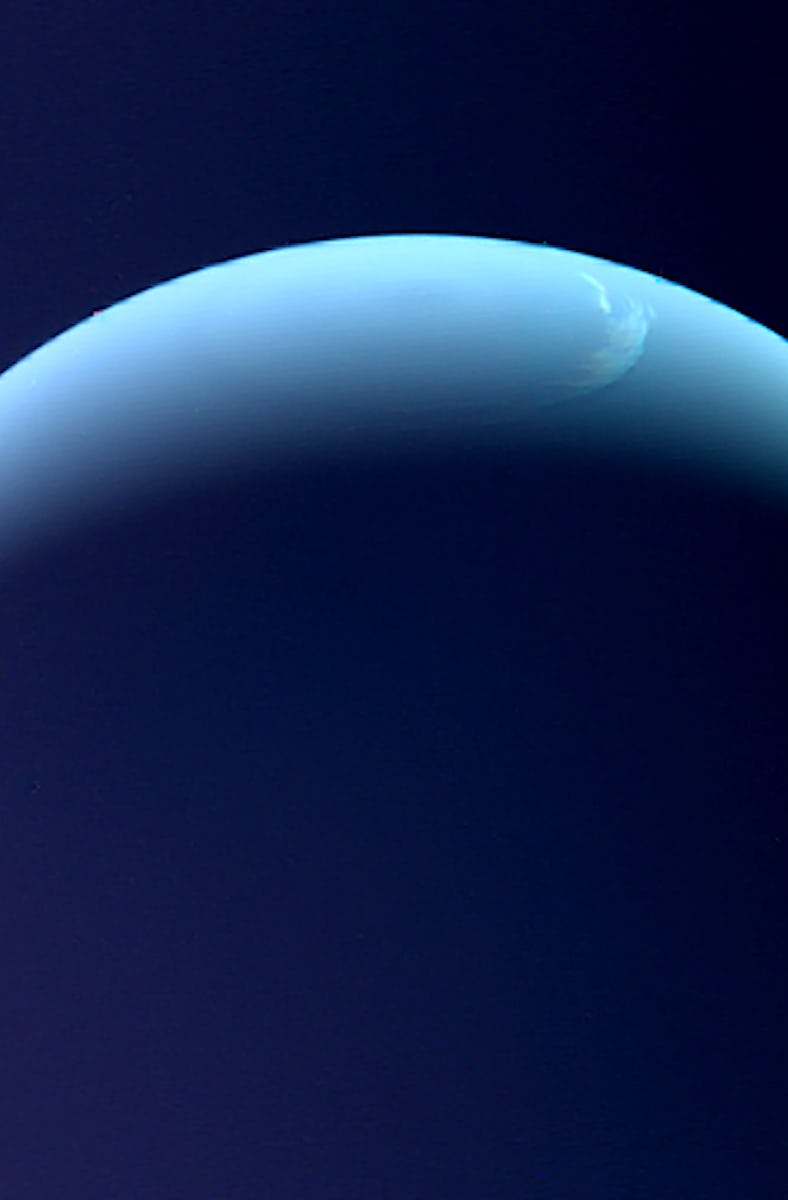Astronomers Capture an Unprecedented Look at Neptune's Mysterious Dark Spot
Astronomers took a closer look at Neptune's fascinating spots.

Astronomers using a powerful telescope in Chile have peered into blemishes on Neptune, and called it a first for ground-based astronomy.
Since NASA’s Voyager 2 flew past Neptune in 1989, astronomers have pondered the temporary dark spots that appear in its atmosphere. Three decades after that historic rendezvous with the Solar System’s outermost planet, the Earth-orbiting Hubble Space Telescope saw a dark spot wider in size than Earth’s Atlantic Ocean. This inspired the team behind new research to take a closer look at Neptune with newer technology.
“Since the first discovery of a dark spot, I’ve always wondered what these short-lived and elusive dark features are,” said Patrick Irwin, lead investigator of the new study published in the journal Nature Astronomy. Irwin shared his thoughts in an announcement from the European Southern Observatory (ESO), which manages the powerful telescope that peered at Neptune from about 3 billion miles away.
According to ESO, this is the first time a ground-based telescope has observed a dark spot in Neptune’s atmosphere.
The MUSE instrument at ESO’s Very Large Telescope took this image of Neptune. A dark spot can be seen to the upper-right.
Taking a closer look at Neptune
Large spots on giant gas planets are common and temporary. Even Jupiter’s Great Red Spot, for example, has shrunken down in recent years and may possibly disappear. These regions are clues about how a planet works, much like storms and aerosols on Earth are symptoms of climate change.
ESO’s Very Large Telescope sits atop Cerro Paranal in the Chilean highlands. From this perch, an instrument onboard the telescope collected the sunlight that reflected off Neptune’s clouds. The instrument, called the Multi Unit Spectroscopic Explorer (MUSE), provided a 3D look at a Neptunian spot in “more detail than was possible before,” according to ESO officials.
From this data, astronomers gauged the height at which the spot sits in Neptune’s atmosphere. They also gained clues about why this spot appeared dark, thanks to MUSE’s ability to unpack the chemical composition of celestial objects.
In their investigations of one spot, they found another. “In the process we discovered a rare deep bright cloud type that had never been identified before, even from space,” study co-author Michael Wong shared in the ESO announcement.
The bright spot near the larger main spot indicates that Neptune’s atmosphere is dynamic. The dark spot is probably the result of air particles collected in a layer below what’s visible, where “ices and hazes mix in Neptune’s atmosphere,” ESO officials said. The bright spot, by contrast, is “rare” and represents “a completely new type of feature.”
The new work highlights the prowess of VLT, and shows that ground-based telescopes can continue the work initiated by their counterparts in space.
Wong jokingly shared that VLT’s capabilities could put him out of work as a Hubble observer.
This article was originally published on